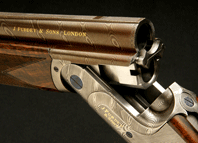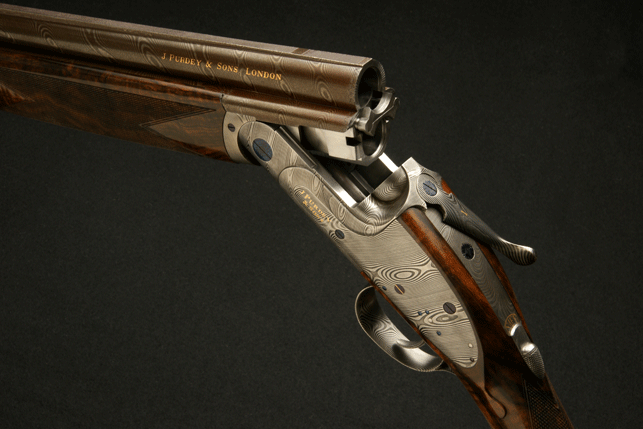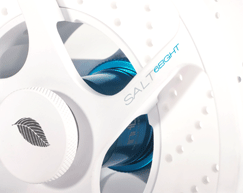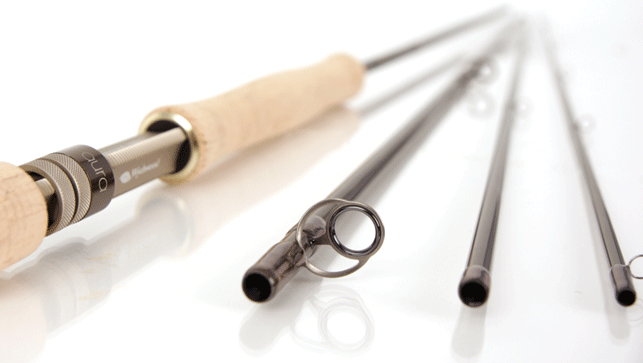Steely shooting
With designs for its famed shotguns dating back to the 19th century, new models by Purdey are a rarity.
However its latest, the Damascus, is as eye-catching as they come: The Damascus gun is a 20-bore over and under that, apart from the stock, is made almost entirely from a special Damascus steel that when etched with acid forms a unique and beautiful patterning.
A modern version of ancient Damascus steel, it is made from a powder metallurgy method of steelmaking developed in a nitrogen filled chamber by Swedish steelmakers to bespoke requirements specifically for Purdey.
The design is modelled on the Woodward/Purdey over and under game gun (one barrel atop of the other, as opposed to side by side). This is a classic design that is made using traditional production methods, with the only relinquishment to modern methods coming from the use of TurboCAD to drive its CNC mills.
The modern manufacturing hub is set aside from the traditional workbenches in Purdey’s West London factory, housing spark eroders that cut the 3D shapes from the specially selected and shaped steel.
Reducing the manufacturing time by 80 per cent, CNC milling helps lower costs and allows the supremely skilled and dedicated workforce to go about constructing and finishing the guns.
At Purdey up to seven people, each highly skilled in their own area, will work on a single gun, taking around 18 months to complete the process.
Each Damascus is bespoke to its owner’s requirements: what they hope to be shooting at; a traditional set of shoulder width, arm length and neck measurements, all incorporated into the design to ensure the perfect shot.
As a result each gun is unique, requiring hundreds of hours of hand finishing to shape the metal work and wooden stock precisely.
The gun’s firing mechanics are also handmade before all parts are highly polished to help remove unwanted moisture then assembled, and the stock is preserved and polished through a long process of coating and removing mixtures of oils and waxes.
Each gun undergoes final etching and even more finishing is applied before rigorous testing by Purdey’s factory manager Christopher Raeburn-Cowell, who personally fires 200 or more cartridges to ensure flawless working order.
Perfectly in time for the British game-shooting season.
Fishing for better design
Game fishing is not angling for tiddlers; in tropical conditions you’re looking to catch shark and other monsters of the deep, hence the need for specialist equipment.
Wychwood is one of the few fishing equipment companies that understands that solid product design can make a product better, more innovative, and easily more aesthetically pleasing than rivals’ offerings.
The reel
The company’s latest salt water fly reel captures this ethos entirely – brazenly white to match your Caribbean yacht, it is also supremely functional and finished to give the user the best chance of avoiding dubious stories about ‘the one that got away’.
Led by Paul Richardson, brand manager and designer for Wychwood Game, the process falls back on the team’s love of both design and fishing.
In this example the reel has been designed to incorporate a cassette system to secure different types of lines to the reel in plastic sections that cost around £10 each.
Such a system for salt water fishing, it can save an angler a fortune over the traditional methods of fitting spools at half the cost of the original outlay – usually around £150 for each spool and anything up to 15 spools.
Wychwood designs its components from the beginning, working with mood boards and sketching out initial concepts before moving into SolidWorks.
The design is then sent to Korea, one of the hotbeds of fishing tackle production, where it is altered for manufacture and an SLA prototype is sent back to the team’s headquarters in Redditch for assessment.
The final model is built from lightweight barstock aluminium before being tested – in this case both off the coast of Wales catching sharks, and running lines from it while attached to a car travelling at 50mph.
Operating at high speeds reels can give off excessive heat, so a white powder-coated finish helps dispel some of that while covering its saltwater-proof anodized body.
The rod
The rod design is based upon the type of fish being angled for and the expertise of the factory where it is being built.
Wychwood returns to its knowledgeable carbon fibre wizards in Korea to draw upon the skilled processes and cheaper labour costs.
The Aura rod is designed for game fishing, so the team work around set specifications; in this case a ten foot long, high power carbon weave rod in four sections.
Richardson and the rest of the design team set out to make it stand out from similar spec rods on the market by adding some aesthetic design tweaks.
The team designed aluminium reel feeds and post ends for the rod, which were then transferred from the CAD model to be CNC-machined and added to the finished product..
This is as close to the company comes to ‘re-branding’ stock Chinese goods for the domestic market, which seems to be the norm for other companies.
Having seen an aesthetic shift towards more modern styling from Scandinavian countries, where the average fly-fisherman age is much lower than elsewhere, Wychwood is keen to flex its creative muscle.
www.wychwood-game.co.uk

A look at the supremely beautiful and efficient equipment for game shooting and fishing
Default









